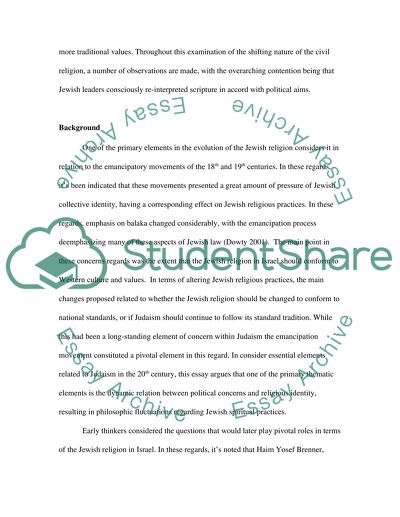Cite this document
(“Civil Religion in Israel Essay Example | Topics and Well Written Essays - 3750 words”, n.d.)
Retrieved from https://studentshare.org/environmental-studies/1421314-civil-religion-in-israel
Retrieved from https://studentshare.org/environmental-studies/1421314-civil-religion-in-israel
(Civil Religion in Israel Essay Example | Topics and Well Written Essays - 3750 Words)
https://studentshare.org/environmental-studies/1421314-civil-religion-in-israel.
https://studentshare.org/environmental-studies/1421314-civil-religion-in-israel.
“Civil Religion in Israel Essay Example | Topics and Well Written Essays - 3750 Words”, n.d. https://studentshare.org/environmental-studies/1421314-civil-religion-in-israel.


